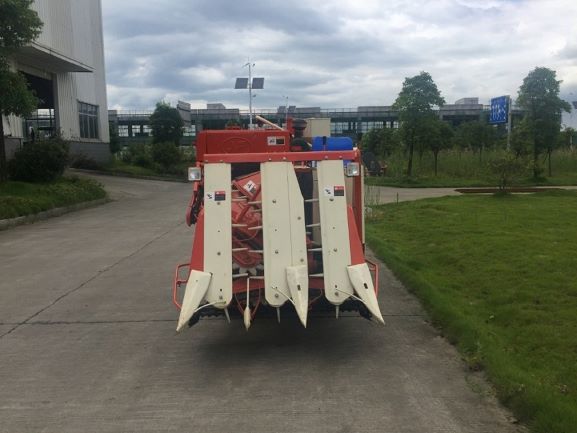LED is a new type of solid-state light source that has received great attention since its inception. Its luminescence mechanism is based on the electrons in the PN junction transitioning between the energy bands to generate light energy. Under the action of the external electric field, the radiation of electrons and holes recombines electrically, and part of the energy is converted into light energy. The lattice oscillation generated by the non-radiative recombination converts the remaining energy into heat energy.
At present, the luminous efficiency of LED is only 20%~30%, and most of the rest of the energy is converted into heat energy. A large amount of heat energy needs to be emitted in time, otherwise the life of the LED will be reduced or even permanently disabled. Therefore, while LEDs are developing rapidly, people are constantly conducting research on new technologies for LED heat dissipation .
Metallic aluminum has always occupied the market of LED lighting main materials due to its small density, high thermal conductivity and mature surface treatment technology. With the improvement of people's safety performance requirements, the electrical conductivity of aluminum has become a fatal scar. In order to improve the safety of LED lighting fixtures (hereinafter referred to as LED lamps), electrical insulation materials have attracted people's attention.
The electrical insulation materials that have begun to emerge are ceramic materials and high thermal conductivity plastics. The use of ceramic materials by humans has been used for thousands of years. The ceramic materials prepared by modern technology have the characteristics of good insulation, high thermal conductivity, large infrared radiation rate and low expansion coefficient, which can become a new material for LED lighting. At present, ceramic materials are mainly used for heat sink materials, circuit substrate materials and lamp heat sink materials for LED package chips. High thermal conductivity plastics have entered the heat dissipation material market with high electrical conductivity and low density value. At present, due to high price, the application rate is not large. This paper mainly discusses the application technology of ceramic materials in LED lighting.
1 Heat transfer mechanism of ceramic materials
Ceramics are non-metallic materials with no free electrons in the crystal structure and excellent insulation properties. Its heat transfer belongs to the phonon heat conduction mechanism. When the crystal lattice is intact and free of defects, the larger the mean free path of the phonon, the higher the thermal conductivity. The theory shows that the maximum thermal conductivity of ceramic crystal materials can be as high as 320W/mK.
It is generally believed that structural defects are the main influencing factors among many factors affecting the thermal conductivity of ceramic materials. During the sintering process, oxygen impurities enter the ceramic lattice, accompanied by structural defects such as vacancies, dislocations, and anti-phase boundaries, which significantly reduce the mean free path of the phonons, resulting in a decrease in thermal conductivity. Modern ceramic technology fixes oxygen to the grain boundary by forming a second phase, which reduces the possibility of oxygen impurities entering the crystal lattice. As the oxygen concentration at the grain boundary is greatly reduced, the oxygen inside the grain spontaneously diffuses to the grain boundary. The oxygen content inside the crystal matrix is ​​reduced, and the number and type of defects are reduced, thereby reducing the probability of phonon scattering and increasing the mean free path of the phonons. Due to the different preparation techniques, the thermal conductivity of ceramic materials is also different. The thermal conductivity of commonly used ceramic materials is shown in Table 1.
Semi-harvester for Agriculture:
The semi-feeding harvester can complete the harvesting, delamination, separation of stems, removal of sundries and other processes at one time, and the Rice Harvester machine for obtaining grain directly from the field is mainly suitable for rice harvesting, wheat harvesting, and this reaper machine can adapt to deep mud feet. Under the serious harvest conditions, the grain cleanliness after harvest is very high, and at the same time, the stem integrity after harvest can be guaranteed, so that farmers can complete harvesting and granulation with a single operation, thus saving manpower and material resources and greatly reducing the burden of farmers.

Semi-harvester for Agriculture Technical Parameters:
1. Size: 3650*1800*1820 (mm)
2. Weight: 1480KG
3. Engine Fuel: Diesel
4. Harvest numbers line: 3
5. Harvesting width: 1200 (mm)
6. Cutting height range: 50-150 (mm)
7. Threshing depth control system: Manually
8. Adaptation crop height: 650-1200 (mm)
If you have any questions, please contact us directly. Crawler tractor for agriculture are produced by Hunan Nongfu with high quality and good appearance.
welcome you can visit our factory for inquiry, please send mail directly to us.
Semi-harvester for Agriculture
China Harvester Machine, Rice Harvester, reaper machine, Agriculture equipment
Hunan NongFu Machinery&Electronic.Co., Ltd. , https://www.nfagmachine.com
![<?echo $_SERVER['SERVER_NAME'];?>](/template/twentyseventeen/skin/images/header.jpg)